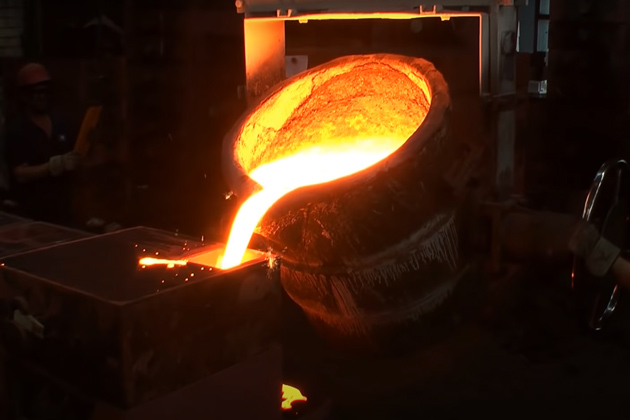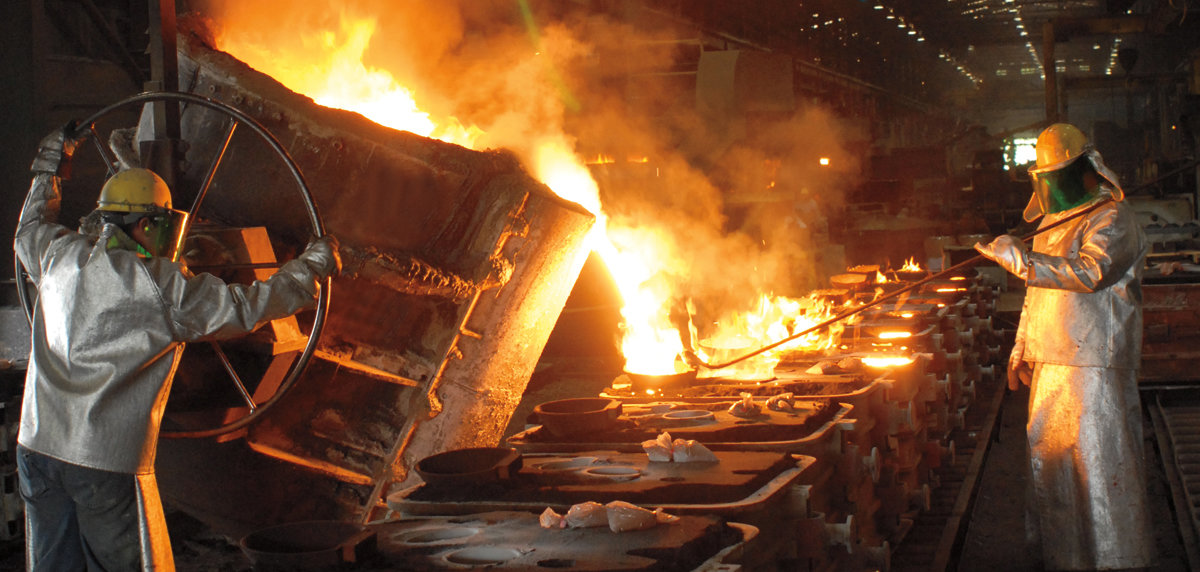Why sustainability are shaping the future of Metal Casting
Unveiling the Intricacies of Style and Manufacturing at a Metal Foundry
The layout and production procedures at a metal foundry entail a collection of elaborate steps. Each phase, from picking resources to melting and casting, plays an important function in the final item. Metal Casting. Precision and quality assurance are vital in this industry. As technology breakthroughs, brand-new advancements are arising. These developments might redefine standard techniques. What ramifications do these adjustments hold for the future of metal factories?
The Melting Process: Transforming Raw Materials Into Liquid Metal
The melting procedure functions as the critical initial step in transforming raw materials into liquid metal, a procedure vital for foundry procedures. This stage begins with the careful choice of steels, which might consist of copper, iron, or aluminum, relying on the desired end product. Each product is assessed for purity and make-up to ensure ideal melting problems.

As the metals reach their melting point, they transform from strong to fluid, permitting for more improvement. This procedure can likewise include the elimination of impurities with slag development, ensuring the top quality of the liquid metal. Inevitably, the effective completion of the melting procedure lays the structure for subsequent metalworking operations.
Molding Strategies: Shaping Metal With Precision
Following the melting procedure, the following phase in steel foundry operations involves molding methods that form the fluid steel right into desired forms. Numerous approaches are used, each chosen based on the particular needs of the job. Sand casting, one of one of the most usual strategies, makes use of a blend of sand and binder to create mold and mildews that can be easily formed and reused. An additional approach, financial investment spreading, involves creating a wax pattern that is coated in a ceramic covering, permitting detailed layouts and high accuracy.
Die spreading, in comparison, makes use of high-pressure to infuse molten metal right into steel mold and mildews, resulting in uniform and durable products. Furthermore, the selection of molding strategy influences the cooling rate, surface area coating, and dimensional accuracy of the final item. Understanding these methods is vital for enhancing design and making sure the effective manufacturing of metal components tailored to specific applications.
Casting Methods: From Model to Manufacturing
Many casting techniques are employed in steel foundries to move from model development to full-blown manufacturing. Amongst these methods, sand casting sticks out for its flexibility and cost-effectiveness, making it excellent for both huge and small manufacturing runs. Investment casting, recognized for its accuracy, is usually made use of for complicated geometries, permitting great details in the end product. Pass away casting, ideal for high-volume production, makes use of liquified steel infused into mold and mildews, offering superb surface coating and dimensional accuracy.

Quality Assurance: Guaranteeing Excellence in Every Pour
While the spreading procedure can vary substantially in between methods, keeping rigorous high quality control is necessary to establish that every put satisfies the called for standards. Quality control in a metal foundry includes a series of methodical checks and assessments developed to identify issues early in the manufacturing procedure. This includes meticulous assessments of raw materials, surveillance of melting temperature levels, and analyses of mold and mildew stability.
Foundry personnel utilize various screening techniques, such as non-destructive screening and dimensional verification, to determine that spreadings attain preferred requirements. Furthermore, adherence to developed sector requirements and qualifications improves the reliability of the end product.
Responses loopholes are also critical; any inconsistencies kept in mind throughout high quality analyses are assessed to improve processes and mitigate future mistakes. Ultimately, a culture of high quality assurance promotes not only consumer satisfaction but likewise an online reputation for excellence in the affordable landscape of steel manufacturing.
Developments and Technologies: The Future of Metal Foundries
The landscape of metal shops is swiftly advancing, driven by developments in innovation and cutting-edge techniques. Automation and robotics are changing standard process, boosting efficiency and precision throughout production. Automated putting systems and robot arms decrease human mistake, causing greater high quality results. Furthermore, the combination of man-made knowledge is making it possible for anticipating maintenance, maximizing equipment performance, and reducing downtime.
Additive production is becoming a game-changer, enabling quick prototyping and the production of intricate geometries that were previously her latest blog unattainable. This modern technology assists in the personalization of steel parts, satisfying particular client demands without substantial dead time.
Sustainability is also an essential emphasis, with foundries taking on greener methods, such as reusing scrap metal and making use of energy-efficient furnaces. These developments not just enhance efficiency yet additionally line up with global efforts in the direction of eco responsible production, making certain the future of metal shops stays competitive and robust in a changing commercial landscape.
Frequently Asked Inquiries
What Kinds of Metals Are Typically Made Use Of in Shops?
Common metals used in foundries consist of light weight aluminum, cast iron, steel, bronze, and brass (Aluminum Foundry). Each steel possesses special residential or commercial properties, making them suitable for numerous applications in markets like auto, aerospace, and construction, to name a few
Just How Do Factories Handle Waste and Environmental Impact?
Foundries manage waste and ecological impact by applying recycling programs, making use of sophisticated filtration systems, and adhering to stringent governing requirements. They usually buy lasting innovations to minimize discharges and advertise responsible source click this usage throughout their operations.
What Precaution Remain In Area for Workers?
Factories execute numerous safety and security measures for workers, consisting of personal protective equipment, appropriate ventilation systems, normal safety and security training, emergency situation reaction methods, and strict adherence to work wellness policies to reduce risks associated with hazardous materials and devices.
For how long Does the Entire Manufacturing Refine Commonly Take?
The whole manufacturing process commonly takes several weeks, relying on the intricacy of the layout and the products utilized. Variables such as mold and mildew preparation, melting, and cooling time substantially affect the overall duration of production.
What Are the Key Challenges Faced by Metal Foundries Today?
Metal foundries today face obstacles such as rising material expenses, fluctuating need, environmental guidelines, experienced labor lacks, and keeping quality assurance. These problems complicate manufacturing efficiency and productivity in an increasingly open market.
The layout and manufacturing procedures at a metal foundry include a series of complex steps. The melting procedure offers as the important first action in changing raw products into liquid steel, a treatment essential for foundry operations. Complying with the melting process, the following phase in metal foundry operations includes molding strategies that shape the fluid metal into preferred forms. Numerous spreading approaches are utilized in steel Going Here factories to move from model development to major manufacturing. Quality control in a metal foundry incorporates a series of organized checks and examinations developed to recognize issues early in the production process.